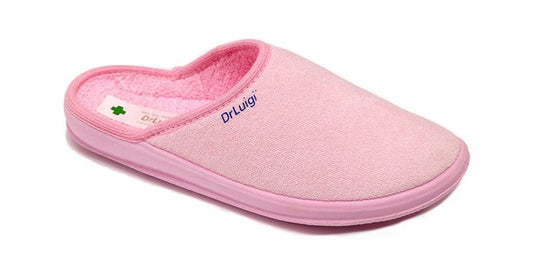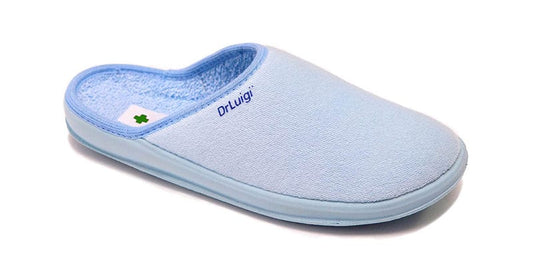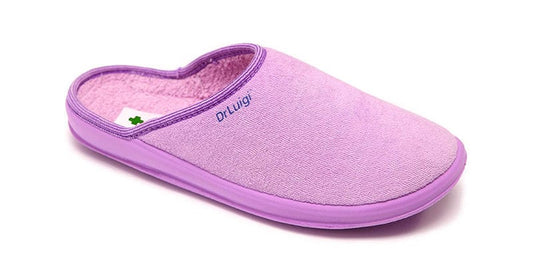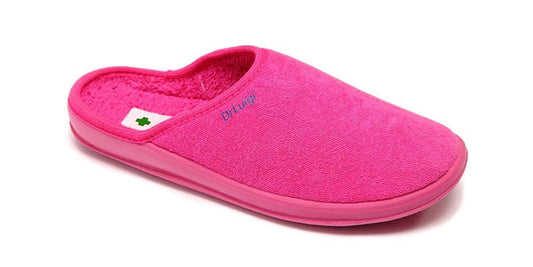It is important to take care when choosing the appropriate footwear for the first steps because poor footwear is one of the major contributing factors and causes of foot deformities. The best footwear for a child’s foot development is bare feet, and it is advised that a child learning to walk spend as much time as possible playing barefoot. Walking barefoot encourages proper foot muscle development and stimulates nerve endings, making it most natural to do so on uneven surfaces like sand or grass. We can purchase children’s first pairs of shoes even before they can stand on their own because this isn’t feasible for the majority of the year in our climate. In order to develop healthy feet, especially during the first steps, footwear has become essential and inevitable due to weather, hard surfaces, and lifestyle choices. Shoes shield the feet from the elements, injuries, and cold.

The following qualities are suggestive of good footwear:
• Roominess: Since children’s feet expand rapidly, it’s important to choose shoes that have enough room up front so that the toes can move freely. We advise that the shoes be wide enough to prevent them from pressing against the tender child’s foot. The toes will move and cross each other if the front of the shoes are too narrow. The foot will be “trapped” by very stiff shoes, which will prevent the muscles from working.
• Flexibility: The three main characteristics of a good shoe are a flexible sole, good toe flexibility, and a soft upper. To ensure ventilation and greater comfort, it is also crucial that the shoes are made of natural materials.
•The majority of kids have wide feet. Make sure the shoes you buy for your kids are wide enough and do not squeeze them when you’re out shoe shopping. Foot deformation may happen if the footwear is inadequate.
• Rigid materials such as leather or plastic should never be worn by newborns. They are best suited for shoes made of “breathable” materials. (Soft leather without a hard sole, cotton, wool, etc.)
•The child’s longest toe should always have space between it and the shoe. While your child might not be able to communicate that his shoe is too tight, as a parent, you should.

HOW DO I SELECT THE CORRECT SHOES?
Wearing small, restrictive shoes while a child’s feet are still developing can stunt the growth of their bones, muscles, and ligaments, which can result in long-term issues with how their feet develop. A child’s feet are extremely soft in their early stages. When purchasing children’s footwear, it is crucial to look for the following features:
- Proper sizing: The shoe shouldn’t press against the foot in any way. The front portion should be roomy enough for the toes to spread their wings, but not too spacious as to allow the foot to swing or slip out of the shoe.
- The shoe should be the right height to keep the ankle in the proper position, unless the weather makes this impossible.
- Flexible sole: The upper portion must be made of soft leather, and the sole must be flexible. It’s crucial that the sole is not smooth, preventing the child from slipping when he first starts walking.
- Anatomical form: the foot is comfortable, safe, and has gentle support thanks to this shape. Because they do not correct foot irregularities, anatomical shoes are not orthopedic footwear.
- Soft and natural material insole: for added comfort while walking. When walking, the insole should be made to give the foot the necessary flexibility and breathability.
- Being made of natural materials that allow the feet to breathe, they are soft and breathable.
- Low heel: to distribute the weight of the body equally across the entire foot.
Dr. Luigi’s footwear satisfies all the requirements listed above, making it a top product and the best option for protecting your health and the welfare of your children. First of all, our shoes are cozy and have flexible soles to allow for natural foot motion. The fact that the shoes and slippers are made of natural materials with guaranteed safety and a lack of dangerous chemical compounds, which are frequently used in the processes of material processing, dyeing, and footwear production, may be the most significant feature. Wearing Dr. Luigi breathable shoes, the child’s foot “breathes” and does not encourage sweating because the child’s foot sweats significantly more. Additionally, good hygiene can be maintained, particularly on the inside. Machine washing shoes is the best and safest way to maintain hygiene, according to practical experience. Children are very active, so footwear needs to be sturdy and resistant to tearing and mechanical harm. It is equally crucial that they be free of any components that might pose a mechanical hazard (slippery, falling off of certain decorative parts). The protection of children’s health and unhindered growth and development is greatly assisted by a guarantee in the form of a European quality certificate, which classifies footwear as a medical product.
CONCLUSION
Wearing the right shoes helps to develop healthy feet. Give your children a healthy start in life. For the foot to develop properly, children’s shoes must adhere to orthopedic standards. The best places to purchase children’s shoes are specialty retailers. The best time to do it is in the afternoon because the feet expand and lengthen by about 4% throughout the day. It is essential to pick shops with measuring equipment that can precisely determine the length of the foot. Finally, since one foot is frequently slightly longer than the other, it is always necessary to measure both feet. For people of all ages, selecting high-quality shoes is essential because they promote healthy and normal foot development.





